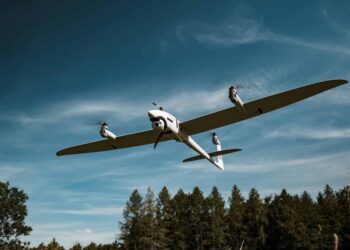US Air Force, WRIGHT-PATTERSON AIR FORCE BASE: The Air Force recently awarded a $180-million contract to the Boeing Company to upgrade the fire-control radar on the service's fleet of 67 B-1B Lancer long-range bomber aircraft.
The nine-year Reliability and Maintainability Improvement Program, or RMIP, will replace two units that make up the current radar system in an effort to improve its performance.
The RMIP system development and demonstration is the first significant radar upgrade for the B-1 in more than 20 years, said Col. Paul Clark, B-1 Systems Group commander.
“The investment we are making with this upgrade will significantly improve the reliability of the B-1's radar system and reduce the time and manpower the Air Force is spending to maintain this critical capability,” Colonel Clark said. “The upgrade is key to keeping the B-1 combat-ready for our warfighters for years to come.”
Modification kits to replace the bombers' receiver and processor will be available beginning in 2011. The RMIP kit comprises a new radar transmitter and receiver, a radar processor computer, and a software package.
“The focus of the software portion of the upgrade is to successfully reimplement 19 legacy B-1 radar modes into a more sustainable software language,” said Capt. Anthony Sidoti, deputy program manager for the upgrade program.
Six of the software modes are already in work under a risk-reduction effort ongoing at the Oklahoma City Air Logistics Center at Tinker AFB, Okla. — home to B-1 sustainment activities. The risk-reduction, which is expected to be completed in the fall, also covered the development of the new hardware that will flow into the improvement program.
“The success the risk-reduction effort has enjoyed is providing the program with a great starting point to begin work on the remaining modes and is key to a smooth integration of all of the new hardware and software on the aircraft,” Captain Sidoti said.
The new hardware included with RMIP solves reliability and maintainability problems that would otherwise force B-1 aircraft to become unavailable in the next several years, said Jeff Day, the program's lead engineer. The hardware will give the bomber flexibility to expand its mission capabilities as new technologies and weapon systems come online in the future.
“The hardware is plug-and-play replaceable with the current radar boxes, but we've chosen a path that forms the foundation for future radar performance upgrades if required,” Mr. Day said.
Initial flight testing of the new hardware and completed software modes on a test bed aircraft are set for later this year. The testing will continue as the software modes are developed with flights slated through 2009.
In turn, Boeing will flight-test a fully upgraded RMIP aircraft at Edwards AFB, Calif., in 2010 and will support field installation and checkout of the RMIP kits at Dyess AFB, Texas; Ellsworth AFB, S.D.; and Tinker AFB.
Installation is scheduled to be completed in 2014.
Germany says adding explosive drones to weapons arsenal
Germany said Friday it would buy explosive drones for the first time as Berlin boosts investments in its armed forces...









